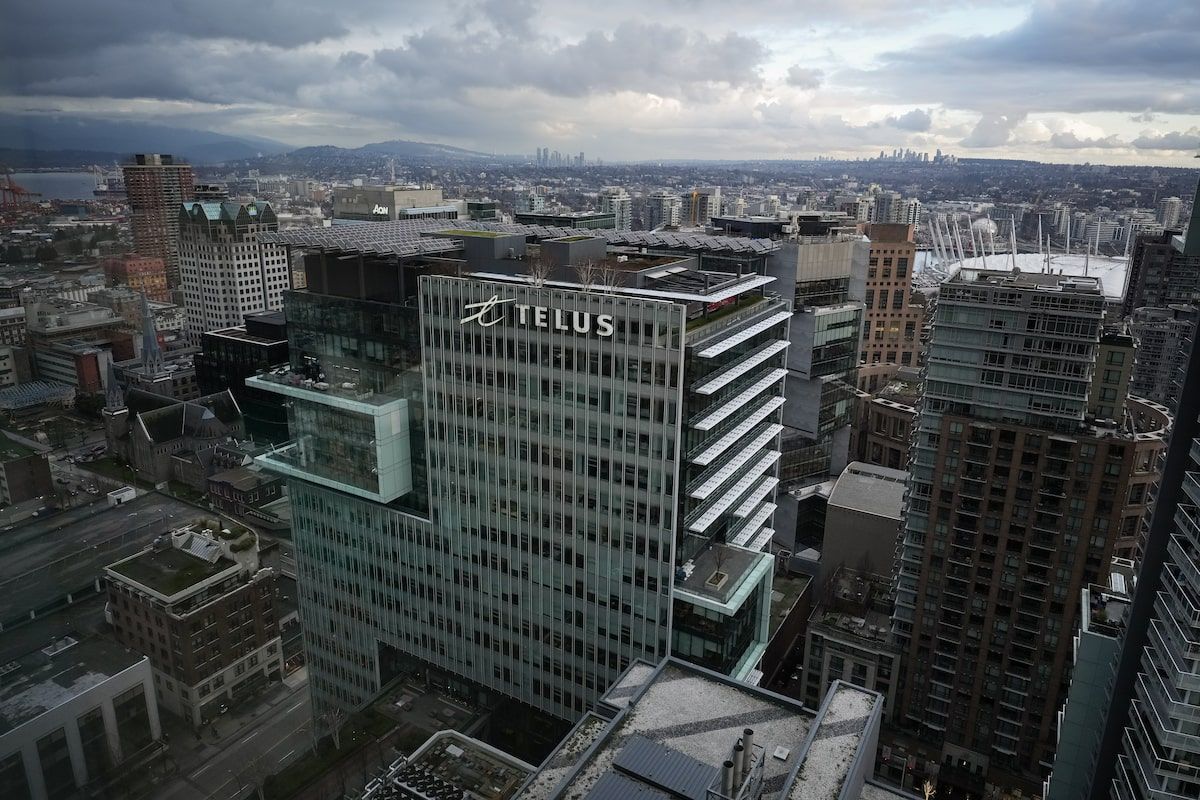
Telus shares tumble on Bank of America downgrade over leverage and dividend payout concerns

Telus Corporation headquarters is seen in downtown Vancouver, on Jan. 19, 2023.DARRYL DYCK/The Canadian Press
Telus T-T shares sank after a downgrade by Bank of America, amid concerns from analysts and a debt rater that the company could be challenged to reduce its high leverage and meet dividend payout goals in its targeted timeframe.
On Friday, Bank of America downgraded Telus from a buy to a neutral rating, and its price target from $24 to $22, saying the company faced a series of headwinds, but that those challenges could be addressed in the long term. The company’s share price was down 4.7 per cent in afternoon trading on the Toronto Stock Exchange.
Analyst Matthew Griffiths said the concerns rested on Telus’s leverage, a dividend greater than free cash flow, and a free cash flow figure that includes revenue from subsidiary Telus Digital that does not contribute to dividend payments.
“Given its challenges and current premium valuation, we believe the stock is fairly valued at current levels,” Mr. Griffiths wrote in his report, issued Friday.
In February, Veritas Investment Research analyst Liam Gallagher pointed out in a note to investors that Telus consolidates its results with subsidiary Telus Digital, in which it has a 58-per-cent stake. That means that the subsidiary’s free cash flow of about $400-million is lumped in with Telus’s free cash flow, despite that amount not historically being available to pay the parent company’s dividends.
After accounting for this and other adjustments, such as incorporating the value of the dividends paid in shares, Mr. Gallagher estimated that the company’s 2024 payout ratio was 140 per cent in its 2024 financial year, will rise to 148 per cent in 2025, and will decline to 103 per cent by 2027 “in an optimistic scenario.“ As of Dec. 31 Telus said it calculated its payout ratio as 81 per cent.
While he said he doesn’t expect an imminent dividend cut, he said he is doubtful the company can eliminate the dividend reinvestment plan any time soon, and needs a “goldilocks scenario” to achieve its targets.
Telus currently has about $29-billion in total debt. In its latest quarter, Telus said it is targeting a leverage ratio (net debt to EBITDA) of 3 for the end of the 2027 financial year, down from 3.9 per cent at 2024 year end. Telus has set a goal of reducing its payout ratio to between 60 and 75 per cent, but calculates it differently.
The company plans to remove the discount on its dividend reinvestment plan (DRIP) in 2027. Last month chief financial officer Doug French said the discount was first added to the DRIP when the company needed cash for spectrum auctions, but its immediate cash needs are declining. The company is aiming to prioritize paying investors in cash rather than issuing new shares.
The company also said last month it planned to raise money to pay down debt by selling non-core assets, decommissioning its copper and signing a partner for its Telus Health subsidiary, and possibly selling towers.
BofA analyst Mr. Griffiths said that while it is possible for the company to reach its 2027 leverage and payout targets, he expects the company to fall short. Veritas analyst Mr. Gallagher estimates that the company will fall short of covering its free cash flow by 2027, “meaning it won’t be able to eliminate the DRIP discount.”
On March 3, S&P Global Ratings downgraded the company’s credit rating and debt, noting that the elevated competitive telecom environment and macroeconomic unpredictability, including slowing immigration and lower discretionary spending, could put pressure on the company’s revenue growth.
“In essence, the timeliness (and eventual amount) of asset divestitures, potential removal of the DRIP, coupled with rising competitive risks, pose a risk that Telus’ leverage could remain high for more than two years, in our opinion,” the credit rater said.